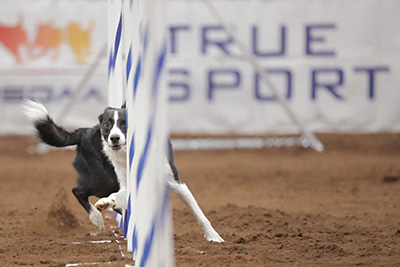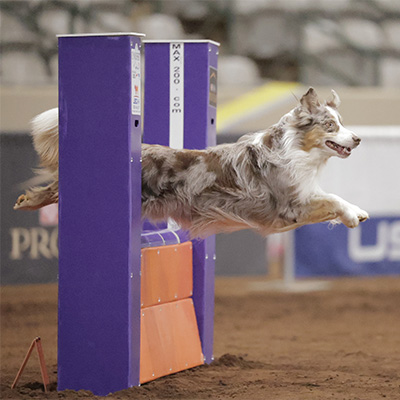Course Details

Those split-second moments when your dog is in mid-air, eyes bright with joy and body fully extended in play are the images that capture the true spirit of our canine companions. Yet they're often the hardest to photograph, leaving you with blurry results that don't match the magical moment you witnessed.
This course bridges the gap between seeing those perfect action moments and actually capturing them.Transform your frustration with missed opportunities into the confidence to document your dog's dynamic personality in any situation.
In this supportive, hands-on class, you'll develop the skills to:
- Freeze action with crystal clarity, even in challenging lighting conditions
- Set up your autofocus system to track fast-moving subjects reliably
- Choose and use the right lenses for different types of canine action
- Anticipate peak moments before they happen
- Create images with visual impact that showcase your dog's personality
What makes this course different: We recognize that action photography combines both technical precision and emotional timing. You'll learn not just the settings to use, but how to develop an intuitive feel for movement that helps you anticipate exactly when to press the shutter. The techniques we teach apply whether you're capturing backyard zoomies, competitive sports, or natural behaviors during walks.
For pet owners: You'll gain the skills to preserve those fleeting moments of joy and energy that make your heart sing—whether it's capturing the perfect mid-air fetch, the happiness of beach runs, or the intense focus of your training sessions.
For aspiring professional photographers: You'll master the technical foundation for consistent results in varied environments, including challenging lighting, unpredictable subjects, and high-speed scenarios across different dog sports.
Those magical moments of canine motion happen every day. With the right skills, you can transform them from missed opportunities into cherished images that capture your dog's spirit for a lifetime.
There are no FDSA prerequisites for this class. However, this is an advanced photography class and not intended for students who are beginning photographers. (Shoot the Dog, also offered this term, is a great class to consider if you're not ready for this one!)

Teaching Approach
The class consists of a mix of written lectures and screen-capture videos. During Weeks 1-3, there will be two Photo Lab assignments per week. The bulk of the lectures will be released in these first three weeks.
Weeks 4-6 will be more of a "choose your own adventure". There will be fewer lectures with new material. Instead of specific, directed assignments, Gold students are given the freedom to choose what to photograph and post (within the topic of photographing moving subjects), constrained by a weekly limit. Those details will be listed in the Homework forum.
This course welcomes all types of learners. We present each concept in multiple ways so you can learn effectively:
- If you learn visually - we'll show you with examples and images
- If you prefer step-by-step instructions - we provide clear, logical sequences
- If you learn by doing - you'll have guided hands-on practice with your camera
Technical terms? We explain them in everyday language.
Feel overwhelmed easily? We break concepts into manageable pieces.
Every question is welcome, every confusion is normal, and we celebrate every step forward in your photography journey.
GOLD STUDENTS have an "All Access Pass" for this class. You will complete the Photo Labs and receive feedback on the results. You can post in your own Homework Forum thread, as well as posting more general questions that may apply to all students here in the Class Discussion forum.
BRONZE STUDENTS are auditors and can read everything that is written, but not interact with the students or instructor directly.
See the "Prerequisites & Supplies" for details about the equipment I recommend for the class.
This class will NOT have a Teacher's Assistant (TA) available in the Facebook study group.
Amy Johnson (she/her) is the official show photographer for many of the premier agility events in the United States, including the AKC National Agility Championships, AKC Agility Invitational, USDAA Cynosport World Games, UKI US Open, and NADAC Championships, as well as numerous local trials, regional events, and breed national specialties. She has photographed a wide variety of dog sports, including agility, obedience, rally, and conformation. (Click here for full bio and to view Amy's upcoming courses.) Instructor: Amy Johnson
Instructor: Amy Johnson

